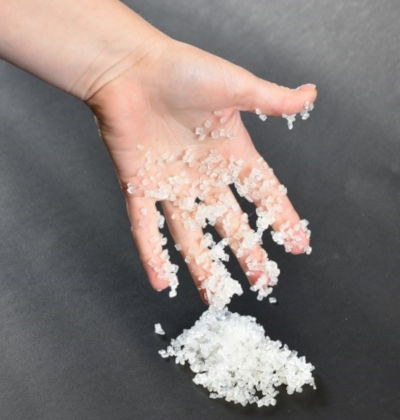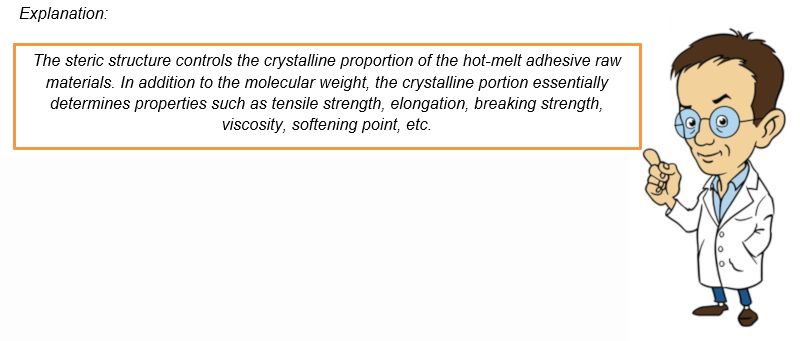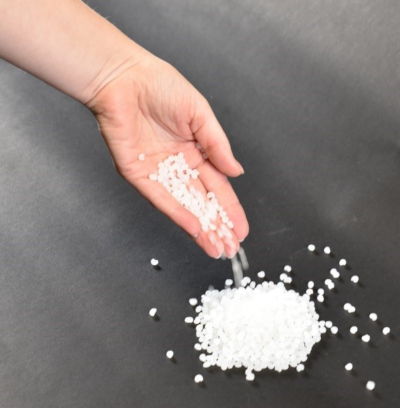With the advent of the Metallocene-catalysed PolyOlefin hot-melt adhesives (MPO), e.g. BÜHNEN avenia, in the 2000s, the conventional EVA-based hot-melt adhesives were considered outdated. Their rapid disappearance from the packaging market was predicted.
Around 15 years later, EVA adhesives are still on the market and have a firm place next to the MPO-based hot-melt adhesives in the bonding of packaging.
How did these adhesives come about and what are the comparative advantages?
Historical development of the oxidation-stable hot-melt adhesives
The development of industrial hot-melt adhesives is closely related to the development of the plastic polypropylene. After the end of World War II, extensive research on oil processing began. In 1950, two US chemists (Hogan & Banks) discovered the polymer of propylene.

In 1954, the Italian chemical engineer Giulio Natta, together with the German chemist Karl Ziegler, researched an industrial process for the production of the new plastic polypropylene (PP). In 1963, the two researchers were honoured for their groundbreaking discovery with the Nobel Prize for Chemistry.

Example of APAO - amorphous, sticky and soft
Polypropylene is a thermoplastic material from the group of polyolefins. It is inexpensive to produce and is one of the most widely used plastics worldwide. In the course of the processing of polypropylene polymerisation with the Ziegler-Natta method, low molecular weight fractions are separated off.
These atactic polyalphaolefins (APAO) are largely amorphous, sticky and soft. The low-cost by-product APAO has good adhesive properties on non-polar surfaces and is resistant to high and low temperatures. The APAOs were used in formulations for hot-melt adhesives.
The demands grew – the metallocene catalysis for adhesives came
At the same time, the production process for PP was continuously improved by ongoing research and the proportions of low molecular weight by-products were becoming ever smaller.
From that point on, the first APAOs were polymerized specifically as adhesive raw materials; polyolefin hot-melt adhesives were formulated and quickly established themselves on the market in various fields of application away from packaging applications.
It was only the discovery that metallocenes are of outstanding activity as catalyst systems that became the starting point of the development of the (modern) metallocene catalysis.
There was a delay in the transfer of this development to hot-melt adhesives: The further development of catalysis enabled polymers to be designed in their steric structures and with extremely narrow molecular weight distributions.

It was not until the early 2000s that providers of MPO-based adhesive raw materials came onto the market.
Comparison:
Formerly: APAO – soft, amorphous, sticky = slow crystallising, long setting times, long open times, very good adhesion spectrum on non-polar surfaces
Now: MPO – hard, crystalline = short open time, fast setting time, slight deficits in the adhesion spectrum
It was now possible to design hot-melt adhesives for the packaging industry. Within a decade, the market for these custom-made products developed rapidly.

Example: free-flowing avenia hot-melt adhesive – hard and crystalline
The properties of the MPO hot-melt adhesives could be specifically influenced. High-quality formulated products were developed, including the oxidation-stable BÜHNEN avenia hot-melt adhesives. The MPO adhesive raw materials are predestined for formulations of hot-melt adhesives in a wide variety of packaging applications.
EVA – hot-melt adhesive – the classic
In the 1960s the first thermoplastic hot-melt adhesives appeared on the market. The ever faster production processes promoted and demanded the development of hot-melt adhesives; in particular the Ethylene-Vinyl-Acetate copolymers as raw material for EVA hot-melt adhesives proved themselves here.
The basic polymer from the copolymer of ethylene and vinyl acetate was so formulated that it was inexpensive to produce. The steady improvement of the adhesive formulations led to an increase in the adhesion and cohesive properties.
The EVA adhesives have become the classic hot-melt adhesives throughout the entire packaging industry.
“The condemned live longer”
With the advent of the MPO- based adhesives, a displacement of the EVA adhesives was predicted. 15 years later, however, EVAs are still in use, the MPO-based hot-melt adhesives could only partially replace them.
Advantages of EVA hot-melt adhesives
- Attractive price-performance ratio
- Short open and setting times
- Tried and tested technology
- Excellent adhesion, even on difficult surfaces
- Very wide range of formulation options
 EVA adhesives are used in automated standard packaging processes with high flow-through volume in the plant. For high throughput volumes in tank systems, the oxidation stability is not so crucial. The liquid adhesive does not stay in the tank long enough for cracking or a significant change in viscosity to occur.
EVA adhesives are used in automated standard packaging processes with high flow-through volume in the plant. For high throughput volumes in tank systems, the oxidation stability is not so crucial. The liquid adhesive does not stay in the tank long enough for cracking or a significant change in viscosity to occur.
Where the advantages of MPO-based hot-melt adhesives, such as avenia, do not come into effect, EVA adhesives score with their lower costs.
Advantages of / MPO-based hot-melt adhesives
- High stability of the colour white, no yellowing
- High oxidation stability, no cracking: Reduction of maintenance costs in application technique and increase in production line efficiency
- High process reliability due to persistent viscose stability and thus consistent application quality
- High thermal stability, therefore suitable for hot filling
- User-friendly processing due to low odour development
Which is the right hot-melt adhesive for you? We will be pleased to advise you!
